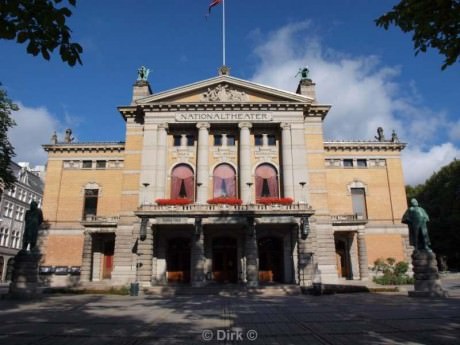The Kennedy Center’s Nordic Cool 2013 Festival’s month long programming offerings of a variety of Scandinavian art have been the tip of the iceberg . . . until now! Nothing may be cooler than the cool, disconnected, aloofness of the U.S. Premiere of Hedda Gabler presented by Norway’s National Theater, a modern Hedda set in the present day and performed in Norwegian with English surtitles.

Hedda Gabler is a timeless, tragic 123-year-old masterpiece that can be interpreted as a reflection on the purposeless life endured by women of that time, and the social conduct and behavior which limited their activities. Originally published in 1890 by Norwegian, Henrik Ibsen, the dramatist’s works are filled with strong women and insights into the human condition. Hedda Gabler, one of the idiomatic Ibsen’s most noted and popular plays is no exception, and the soul of Hedda Gabler illuminates the protest against the double standards that exist in society.
I was excited to discover the contemporary approach directed by Peer Perez Oian and adapted by Ole Johan Skjelbred to the Ibsen text and the textured, nuanced lives and relationships of Hedda Gabler as the events unfold. What I quickly realized is that this was a cosmopolitan production executed with a heavy director’s hand and a loose, radical interpretation of the text.
The playbill in fact has an explanation of a play that I did not see. I like what I read, but it contains details and a vision by the director that I didn’t see on the stage. “Hedda and Tesman (her husband) are not two-dimensional, but are representing the average person in a superficial society where ruthless individualism and the need to succeed come before anything else.”
As written, Hedda is a truly complex, enigmatic character who is alluring yet wicked. Her sinister manipulations ultimately trap her beyond her ability to escape, and her ideal of freedom, courage, and beauty turns into a loathsome reality. Through a series of personal campaigns for control and dominance, Hedda will plot, lie, and cheat her way through life to escape her own boredom, no matter the cost. Ibsen let the story unfold through the characters actions and interactions in his presentation of a truer reality.
If you are an Ibsen purist, you might be disappointed by the lack of the interaction between the characters in this ‘abridged’ version. Missing in Oian’s version for me is the struggle between the inward needs of all of the characters in the play, and the demands of their social environments being expressed in this moody drama. Lost are the character distinctions and personal details that determine a tone and help create the nuances of their back story. In the present day version of Hedda, very little of the personality and character descriptions most associated with and written by Ibsen of the five main characters (Hedda, Tesman, Brack, Lovborg, and Elvstad) remain the same. Other characters – the aunts and the maid – are eliminated entirely. Much of Ibsen’s text is edited, rearranged, or deleted entirely in this version, and gone is the tightness of the play’s structure. Things are said but not seen, told but not fully embraced, and performances are defined by a character sketch instead of being directed to portray fully realized three-dimensional characters. The momentum is there but the spirit and passion are lost.
Director Peer Perez Oian’s eccentric version will not give you a real feel or a full understanding of Hedda Gabler or the other characters in the Ibsen play. A more accurate description of Director Peer Perez Oian’s eccentric versiothis version of Hedda would be described as a “reimagined Hedda Gabler,” or “inspired by Hedda Gabler.” This is not your parents or grandparents’ Hedda Gabler. It’s not Ibsen’s either. I’m a huge fan of artful theater interpretations and avant garde approaches to classic text but this boldly directed, style over story depth interpretation had little appeal for me.The blocking was too busy and the characters felt disconnected from the emotion and soul of the story.
One of Ibsen’s major contributions to theater is a multilayered dialogue where the characters speak obliquely about a subject rather than directly. Director Oian turns this concept on its head and not only breaks the 4th wall, but introduces the start of the play with a warm and fuzzy, improv exchange by the actors interacting directly with the audience.
The five actor ensemble (Andrea K. Braen Hoviig, Mattis Herman Nyquist, Jorgen Langhelle, Christian Greger Strom, and Tone Beate Mostraum) of Norway’s National Theatre is impressive, and their talent is clearly recognized. Disappointing is that in this version of Hedda Gabler, they had little opportunity to engage with the depth of their characters, build chemistry, or realize the emotional life and arc of the relationships as the Hedda tale unfolds. Their characterizations, as directed, only allowed the actors to scrape the surface and hint at fully displaying the skill and range that the performers possess. Still, I sincerely appreciated the opportunity to enjoy them, even in a limited display.
The ease and naturalness of Andrea K. Braen Hoviig’s approach to Hedda are a unique and likeable blend of flirtation and selfishness. The layers of Hedda are not as easily exposed but the appeal to the character as presented is.
On the surface, the graceful, witty, and willful Hedda appears to be a satisfied newlywed but she is not in love. Hedda is bored, and questions the ability to be happy. In a conversation with Brack (Christian Greger Strom), a family friend, she reveals that she has never had any real excitement in her life “nothing authentic” she says, and the worst is”being stuck every second of your life with the same person.” Throughout the course of the evening we witness Hedda’s playful physicality, growing jealousies, and her vocal dissatisfactions. When this dashing personality is straightened out to a desperate quiet – in a quickly unraveled and abrupt ending – I found it hard to believe. I missed the subtext, the nuanced layers from the text, and the substantive and emotional interplay.
The set design is ultimately disappointing and not effective because there isn’t any added value to the production, and it failed to enhance the story in any way. It succeeds in theatricality, but the set could have been a bare stage with five clear chairs and its contribution and impact would have been the same – very little. Actually, the decision to have a bare stage would have probably had more meaning because the choice would telegraph the focus of character study.
The play is a criticism of life, and underscored by the psychological study of a certain type of woman – Hedda Gabler Tesman. Ibsen’s plot of frustrated ambition lacked the clever, compelling, fascination that the performances begged in the version presented by the Norway National Theatre. The bold direction of Oian and the adaptation by Ole Johan Skjelbred is a watered down, technically convoluted interpretation, that at its core is more an experiment in style than an artistic journey of substance. Unfortunately, in my opinion, the audience never got to see Ibsen’s Hedda Gabler or a fresh interpretation of it
Hedda Gabler is presented in Norwegian with English surtitles.
Running Time: One hour and twenty minutes, with no intermission.

Norway’s National Theater’s Hedda Gabler played on February 26-27, 2013 at The Kennedy Center’s Eisenhower Theater, as part of the Nordic Cool 2013 Festival. For more information on future Nordic Cool 2013 Festival events, visit their website.




